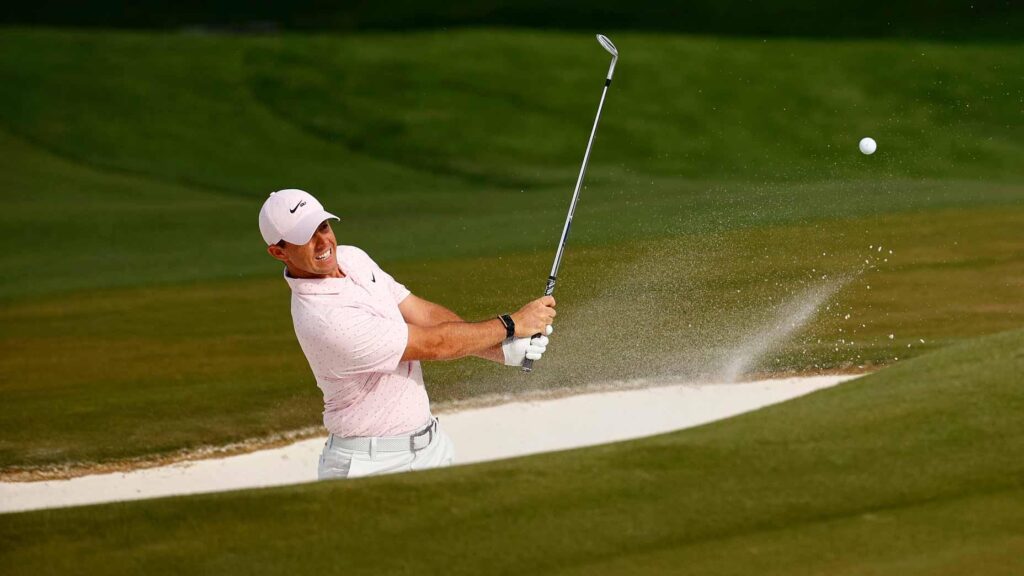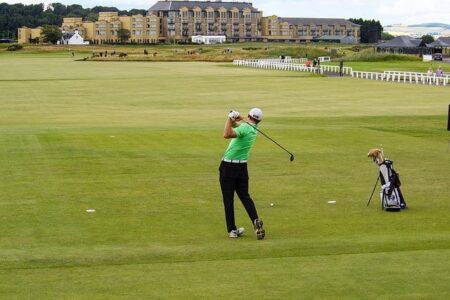Golfers seeking to improve their performance out of the sand may find the key lies in a simple yet often overlooked adjustment: making a full backswing. Recent insights from professionals and coaches emphasize that extending the backswing can significantly enhance control and power for bunker shots, helping players escape challenging lies more consistently. This technique tweak is gaining attention across golf communities as an effective way to boost accuracy and distance from the bunker, a notoriously tricky hazard on the course.
Mastering the Mechanics of a Full Backswing for Consistent Bunker Control
Executing a full backswing is crucial for achieving consistent control and accuracy when playing bunker shots. One of the often overlooked aspects is the smooth buildup of momentum, which allows the club to glide effortlessly through the sand upon impact. To accomplish this, focus on maintaining a steady arm extension while rotating your shoulders fully, creating a powerful coil. This not only ensures better clubhead speed but also enhances the feel needed to gauge bunker resistance, reducing the risk of chunking or blade shots.
Key elements to practice during your backswing include:
- Balanced weight distribution: Keep your weight slightly favoring the front foot to stabilize your stance.
- Controlled wrist hinge: Allow your wrists to hinge naturally to generate leverage without losing control.
- Full shoulder turn: Rotate your shoulders 90 degrees to maximize swing arc and power.
| Component | Recommended Action | Common Mistake |
|---|---|---|
| Weight Position | Front foot favor | Weight too far back causing loss of control |
| Arm Extension | Maintain steady and extended arms | Over-bending elbows reducing power |
| Shoulder Turn | Full 90-degree turn | Partial turn leading to weak shots |
Adjusting Body Position and Clubface to Maximize Distance and Accuracy
Finding the ideal stance and adjusting your clubface are pivotal in elevating both the distance and precision of your bunker shots. Begin by slightly opening your stance, which encourages an outside-in swing path, allowing the club to glide through the sand more effortlessly. Simultaneously, position more weight on your front foot to maintain stability and prevent excessive backward movement during your swing. To further enhance control, open the clubface by rotating it away from your body. This not only increases the loft but also helps the club slice through sand with less resistance, delivering a higher and softer shot trajectory.
Mastering these adjustments requires deliberate practice but yields significant results. Below is a quick reference chart for optimal body and clubface setup based on distance from the lip of the bunker:
| Distance from Lip | Stance Width | Weight Distribution | Clubface Angle | Ball Position |
|---|---|---|---|---|
| 0-5 yards | Narrow | 60% front foot | Open 15° | Forward (left foot) |
| 5-10 yards | Medium | 50% evenly | Open 10° | Centered |
| 10+ yards | Wider | 40% front foot | Neutral to slightly open | Back (right foot) |
- Open your stance to create a better swing path and increase loft.
- Shift weight forward to stabilize the swing and ensure crisp contact.
- Adjust clubface angle based on distance to control trajectory and spin.
- Experiment with ball position for optimal launch and roll.
Closing Remarks
Mastering a full backswing is a pivotal step for golfers aiming to improve their bunker play. By incorporating this technique, players can generate the necessary power and control to escape sand traps more consistently. As the game continues to evolve, refining such fundamentals will remain essential for both amateurs and professionals seeking to lower their scores.








